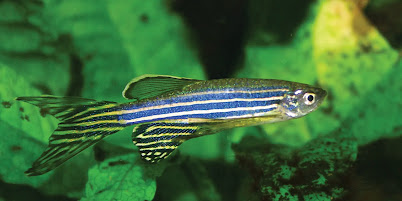The researchers used particle image velocimetry and high speed cameras to analyse the spontaneous swimming of zebra fish
in a tank (physics of fluids).A fish accelerates when it blends its caudal fin-attached to the vertebral column-to one side and then returns to the neutral position as the fish straightens its body. In this completion of a single tail swing, the researchers discovered the formation of two vortex cores at the wake, spinning in opposite directions, says a press release.
These cores constitute low pressure and high pressure regions on opposite sides of the fish. The researchers found the pull generated by the low pressure area and the thrust produced by the high -pressure area together provide the propulsion power of the zebra fish.
When the fish body was J-shaped, the high pressure area slid to the rear of the caudal fin,and the low-pressure area slid to the front of the caudal fin.
The caudal fin used the low-pressure area to drive the fluid toward the body and generate a vertical upward pull on the fin. The high-pressure area pushed the fluid away at the crest and the generated an upward thrust on the caudal fin. Repetition of this process enabled the zebrafish to move continuously.

Comments
Post a Comment